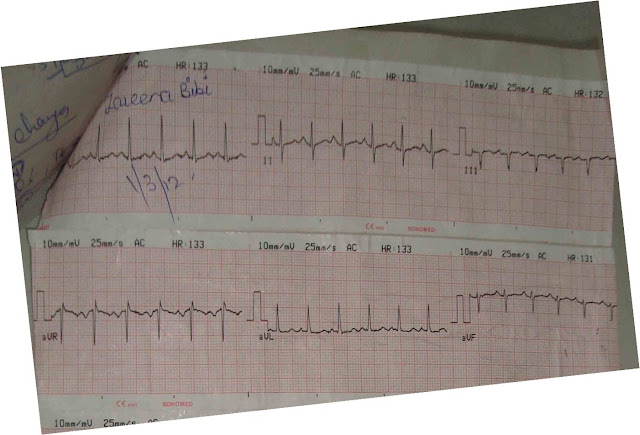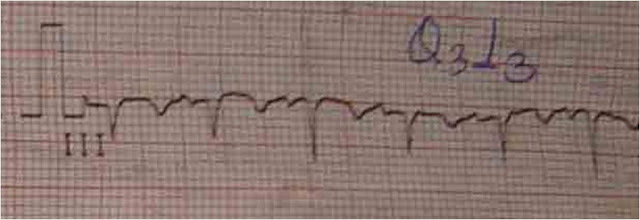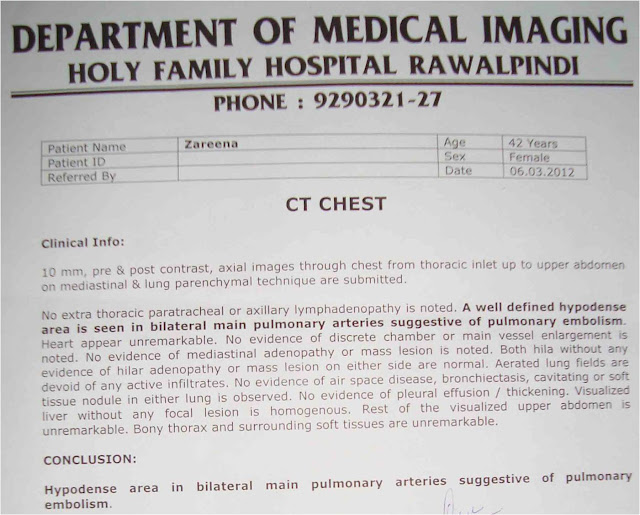•A 42 year old lady from murree visited our hospital for the evaluation of her left leg swelling that she noticed about 2 weeks back. While entering through the gate of Holyfamily Hospital she suddenly collapsed and was rushed to Emergency Department, where she regained consciousness but was dyspneic. Her examination was unremarkable except for a respiratory rate of 32/min.
•What is the likely clinical diagnosis? How it can be confirmed? And how will you further evaluate this patient?
Post your answer as comment (scroll down). and answer or further follow up will be presented after 5 answers.
Answer
D-dimers of the patient were advised
D-dimers of the patient were advised
•Patients value: 1600ng/ml
•Normal value: <200ng/ml
Venous Doppler left lower limb showed evidence of Deep Venous Thrombosis(DVT)
•This is a classical scenario of Pulmonary Embolism.
ECG shows Q3T3 pattern in our patientA classical ECG in a pulmonary embolism patient shows S1Q3T3
•D-dimers are markedly elevated and there is established DVT
•CT chest proved pulmonary embolism, showing hypo dense areas in bilateral main pulmonary arteries territory






This comment has been removed by the author.
ReplyDeleteDr haseeb tell about the likely diagnosis.. don't just interpret the ecg. from the history tell the likely diagnosis.. question is what is the likely diagnosis and how will confirm it etc.. :)
ReplyDeleteAlso there is Q-wave in Lead III
ReplyDeleteThis comment has been removed by the author.
ReplyDeleteThis comment has been removed by the author.
ReplyDeleteThis comment has been removed by the author.
ReplyDeleteYup... The probable diagnosis from the above evidences might be "Cor Pulmonale"
ReplyDeleteRIGHT HEART FAILURE ???
ReplyDeletemost probably deep vein thrombosis leading to distal embolism in pulmonary artery leading to sudden collapse.
ReplyDeleteright heart failure developed afterwards.
Lower limb doppler ultrasound, duplex scan, venography
Ecg and Echo for any source of thrombi
Exactly its Pulmonary embolism as she presentd with sudden collaps wid only one leg sweling with just 2 week history and on ecg one othr thing which favouring PE is Q in III T invrted and S wave in Lead I..so it shows She had DVT of left leg which cause embolism.
ReplyDeletelol .. mitral stenosis .. what points went towards mitral stenosis?
ReplyDeletePE
ReplyDeleteIT IS MOST PROBABLY RIGHT VENTRICULAR FAILURE SECONDARY TO EMBOLIZATION OF DEEP VEIN THROMBOSIS.
ReplyDeletePE
ReplyDelete